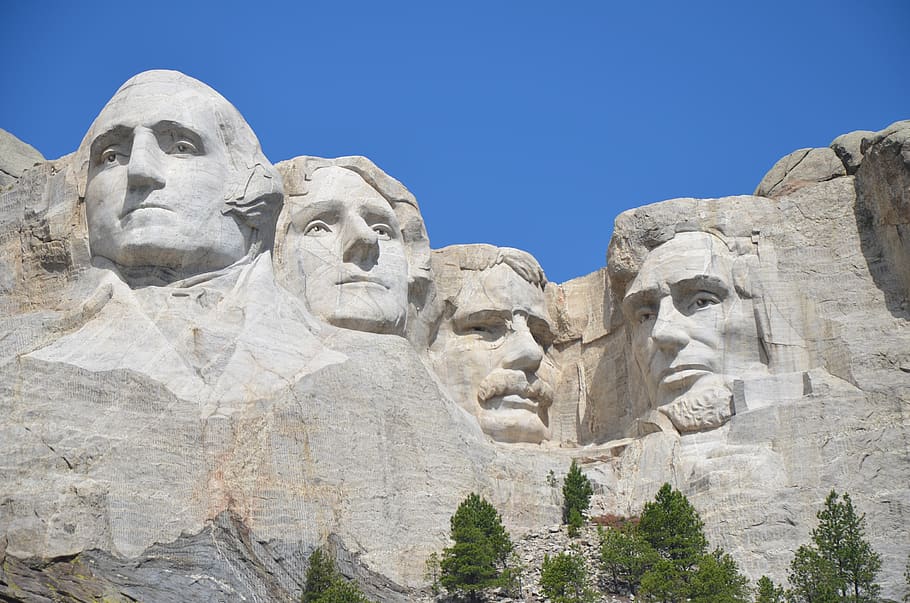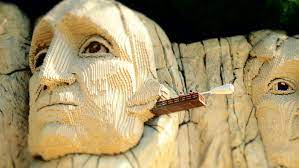
Unveiling the Majestic Mount Rushmore history
Introduction
Nestled amidst the Black Hills of South Dakota, Mount Rushmore stands as a colossal testament to both artistry and history. This iconic American landmark, known for its massive presidential sculptures, has become a symbol of national pride and perseverance. As we delve into the rich tapestry of Mount Rushmore’s history, we unearth fascinating facts that illuminate the story behind this awe-inspiring monument.
Mount Rushmore history
The Visionary: Gutzon Borglum
The Mount Rushmore National Memorial owes its existence to the visionary sculptor Gutzon Borglum. Born in 1867 in Idaho, Borglum embarked on a prolific career as a sculptor, gaining recognition for his larger-than-life creations. The idea of carving the faces of prominent American presidents into the granite walls of the Black Hills germinated in Borglum’s mind as a tribute to the nation’s leadership.
Borglum’s vision was not just to create an artistic masterpiece but also to carve a memorial that would endure for centuries. In 1927, after scouting several locations, he chose Mount Rushmore for its favorable granite composition, accessibility, and prominence.
The Immortalized Presidents
The faces of four distinguished American presidents were chosen to be immortalized on Mount Rushmore. The selection process involved considering their contributions to the nation’s development and their impact on American history. The final lineup comprised:
- George Washington: The first President of the United States and the Commander-in-Chief of the Continental Army during the American Revolutionary War. Washington’s leadership played a pivotal role in the founding of the nation.
- Thomas Jefferson: A key figure in drafting the Declaration of Independence and the third President of the United States. Jefferson’s advocacy for democracy and individual rights left an indelible mark on American governance.
- Theodore Roosevelt: The 26th President, renowned for his progressive policies and commitment to conservation. Roosevelt’s presidency saw the establishment of the United States Forest Service and the Antiquities Act.
- Abraham Lincoln: The 16th President and the leader during the American Civil War. Lincoln is remembered for his role in abolishing slavery through the Emancipation Proclamation and for his eloquent Gettysburg Address.
Carving Challenges and Techniques
The execution of Borglum’s grand vision was no small feat. Carving enormous faces into the rugged granite of Mount Rushmore presented numerous challenges. The process involved skilled workers, engineers, and sculptors who worked tirelessly under Borglum’s guidance.
The carving began in 1927 and continued for 14 years, enduring interruptions due to financial constraints and the challenges of working with the unpredictable South Dakota weather. To create the facial features, a combination of dynamite, jackhammers, and chisels was used. Precision was paramount, and the sculptors relied on detailed scale models and full-size plaster models to guide their work.

The Mount Rushmore project marked the integration of both traditional and innovative sculpting techniques. Dynamite was used to remove large sections of rock, while the finer details were carved using more delicate tools. The final result is a testament to the skill and perseverance of the artisans who transformed the mountain into a work of art.
Symbolism in Sculpture
Mount Rushmore isn’t merely a commemoration of four presidents; it symbolizes the founding, growth, preservation, and development of the United States. Each president’s selection was purposeful, representing different aspects of American history and ideals.
- Washington: The founding father symbolizes the birth of the nation and its struggle for independence.
- Jefferson: As the principal author of the Declaration of Independence, Jefferson embodies the spirit of democracy and individual freedoms.
- Roosevelt: Representing the era of industrialization and conservation, Roosevelt’s inclusion highlights the nation’s commitment to progress and environmental stewardship.
- Lincoln: The emancipator, Lincoln’s presence on Mount Rushmore signifies the fight against slavery and the preservation of the union during the Civil War.
Despite the inherent challenges in selecting only four presidents, Borglum succeeded in crafting a tableau that encapsulates the essence of America’s journey.
Controversies and Criticisms
While Mount Rushmore is widely celebrated as a national treasure, it has not been without controversy. The Black Hills, where the memorial is situated, hold sacred significance for several Native American tribes. The Lakota Sioux, in particular, consider the area as part of their ancestral lands.
The construction of Mount Rushmore resulted in the displacement of native communities, leading to tensions that persist to this day. Additionally, the choice to carve the faces of American leaders into a sacred mountain has been a source of ongoing debate, with critics arguing that it is a symbol of cultural appropriation.
Furthermore, Gutzon Borglum, the project’s visionary, held controversial views, including associations with white supremacy groups. While these aspects don’t diminish the artistic and historical value of Mount Rushmore, they underscore the complex layers of its history.
Visitors and Tourism
Mount Rushmore officially opened to the public on October 31, 1941, shortly after Gutzon Borglum’s death in 1941. Since then, it has become a major tourist attraction, drawing millions of visitors each year. The memorial offers not only a visual feast of colossal sculptures but also a wealth of educational experiences.
Visitors can explore the Sculptor’s Studio, where Borglum’s scale model and tools are displayed, gaining insights into the artistic process. The Lincoln Borglum Visitor Center provides a comprehensive overview of the memorial’s history, including the challenges faced during construction.
One of the most iconic moments at Mount Rushmore occurs each evening during the summer months. The Avenue of Flags, featuring flags from all 50 states, leads visitors to the Grand View Terrace for the evening lighting ceremony. Against the backdrop of the illuminated sculptures, the ceremony pays tribute to veterans, serving as a poignant reminder of national unity.
Preservation Efforts and Challenges
Preserving the integrity of Mount Rushmore is an ongoing challenge due to natural elements and weathering. The granite faces are subjected to erosion from wind, water, and temperature fluctuations. To counteract these effects, the National Park Service has implemented various conservation measures over the years.
Regular monitoring, cleaning, and repair work are conducted to mitigate the impact of environmental factors. However, finding a balance between preservation efforts and maintaining the aesthetic integrity of the sculptures remains a delicate task.
Conclusion
Mount Rushmore history stands as an enduring tribute to the spirit of America—a testament to its founders, leaders, and the ideals they championed. While controversies surround its creation and location, the monument continues to captivate and inspire millions of visitors who come to witness this marvel in the Black Hills.
Gutzon Borglum’s ambitious vision, coupled with the skill of the artisans who brought it to life, has created a symbol that transcends its granite origins. Mount Rushmore is not merely a sculpture; it is a living testament to the nation’s history, reminding us of the struggles, achievements, and ongoing journey of the United States.


